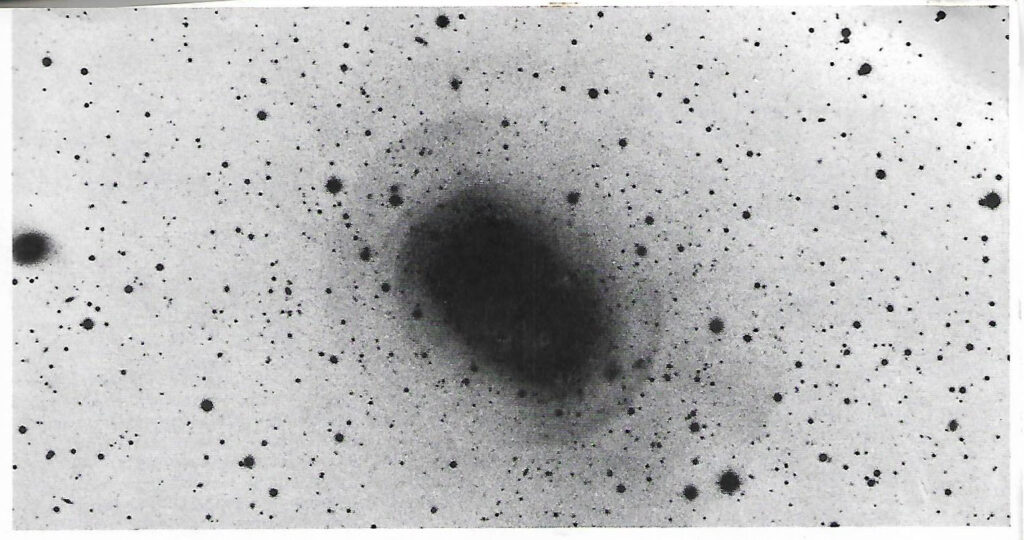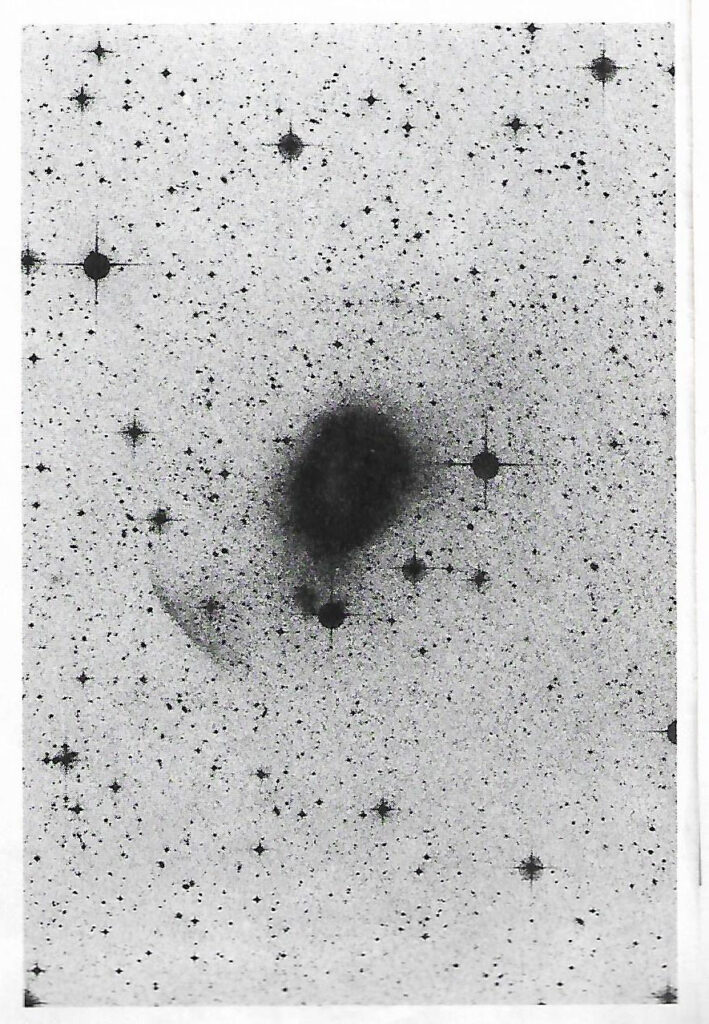ASTRONOMY and archaeology have much in common. In both sciences we have fragments of data, clues from which to build up a picture of the way things were. By digging more deeply into the ground we can study progressively older stages of development. By looking further out into space we look back to earlier epochs, because the distances are so great that even Mercurial light takes a very long time to traverse them. We see the outer parts of the Universe as they were some thousands of millennia ago.
The picture that we paint of the early Universe comprises a huge bubble of gas expanding rapidly into the void of space. But as far back as we can yet actually see, the Universe is populated by galaxies- huge cultures of stars jostling together- each galaxy or group of galaxies in incredible isolation from others. This view does not perturb us, for we think we understand how galaxies are made. The Universal expanding gas cloud broke up into eddies, and those eddies were drawn in upon themselves by the unconquerable force of gravity. Steadily they collapsed, slowly spinning. As their density was forced up, the gas was squeezed to form stars.
Because the eddies rotated, the galaxies so formed could collapse only to form flattened pancake-shaped discs. The first stars to be formed, and hence the older as we now view them, occupied a more nearly spherical volume, concentrated towards the middle. The stars that formed later lay in the disc, and actually ended up in curved bands within that disc. By this simple process were created spiral galaxies; this exactly describes the corner of the Universe we find our sun to inhabit. Spiral galaxies have young, blue stars in a disc, and old, red stars in a halo and central nucleus. In this way we can sketch the evolution of the Universe right up to the present. But we have failed to account for the elliptical galaxies.
Elliptical galaxies are rugby-ball shaped, have no disc, and have neither young stars nor the gas to make more. They seem old. And they cannot be directly from gas clouds. How do we fit them in?
A couple of years ago, David Malign, the research photographer at the Anglo-Australian Observatory, noticed a very faint wisp of light near to the elliptical galaxy NGC1344. His discovery was made on photographs taken by the British Schmidt Telescope at Siding Observatory in New South Wales. David applied various photographic techniques to reproduce the feature better. To the surprise of almost the entire astronomical community, his picture showed the wisp of light to be part of a thin shell of material partially enveloping the galaxy like an incomplete soap bubble. David, together with David Carter also of the Anglo-Australian Observatory, examined several more galaxies, and eventually made a survey. About10 percent of elliptical galaxies showed evidence for surrounding shells of material; in many cases there were several concentric shells. Quite likely many other elliptical galaxies -perhaps all- have shells too faint to be recorded on these photographs.
So faint are these shells, shining only one hundredth as brightly as the darkest night sky, that they cannot readily be studied. We would dearly love to apply to them the astronomer’s most precious of tools, the spectrograph. From a spectrum we could learn exactly what the shells are made of, how they are moving, and other useful facts. But so little light comes from them that it would require more than a week of telescope time to make one measurement; one week simply cannot be spared.
Instead, the two David’s and I measured the color of one of the shells. To accomplish this we had to make one measurement of the shell’s brightness at as blue a wavelength as possible, and another far into the red. The first was fairly easy. For the latter we needed highly sophisticated infra-red equipment. This we had at the Anglo-Australian Telescope, and our measurement was successful. It is unlikely that this crucial infra-red measurement could have been made anywhere else in the world.
From the color of the shell it was straightforward for us to infer its composition. Just like its parent galaxy, the shell (and hence presumably all such shells) comprised old, cool stars. The shell is an old feather, therefore. But it can survive the gravitational predators of the galaxy within only if it has been ejected and is still moving outwards. It is, in effect, a fossil of the early history of the elliptical galaxy, and tells us something of events long past.
The link between these two stories is provided by a PhD. Student at the Australian National University’s Mount Stromlo Observatory. Peter Quinn is his name. Peter has used the Observatory’s new, large computer to investigate theoretically what happens if spiral galaxies collide.
In practice the word ‘collide’ is inappropriate. The stars within galaxies are so very far apart that individuals never bump into one another. Instead the two populations of stars merge into a single, new galaxy. The gas, which is smeared throughout the galaxies, does collide, and sticks together into larger bobs. These blobs are squeezed by the collision, a circumstance that hastens their conversion into stars. Very soon all the gas has gone, and the stars collectively age until they resemble the population of an elliptical galaxy. But more – the original discs of the spiral galaxies are destroyed. Instead, the stars’ orbits become puffed out to form something rather like a rugby ball in shape.

It has long been known that this is a way to make elliptical galaxies. Some pundits have maintained that all ellipticals were manufactured by this process. But others have remained skeptical. How, in particular, can one explain the presence of so many elliptical galaxies in isolated parts of the Universe? The chances of two spiral galaxies meeting out there are utterly remote.
What Peter Quinn showed was that by merging spiral galaxies, or a spiral and an elliptical galaxy, not only do you generate a purely elliptical galaxy, but you also eject a few stars in a shell. Peter was the first person to predict the formation of shells; he did so even before he knew of David Malan’s discovery.
Here was the key to the issue. The shells appear to be proof that once spiral galaxies were involved in a collision. And it is precisely in the most isolated of elliptical galaxies that David Malan’s shells are most readily seen.
The case is by no means closed. Although the discovery of shells around elliptical galaxies does suggest that they have all been made by gargantuan mergers, many astronomers are not yet ready to accept these arguments. The nagging problem of the isolation remains, and can be circumvented only by arguing that spiral galaxies often formed in small groups, and that the quirks of gravitational forces caused the individual galaxies plunge suicidal into one another’s arms. Much more computing time must be invested in the subject before such ideas can be tested.
Meanwhile the shells are there, beckoning us to test ideas by making further measurements, yet beguilingly faint. Indeed, they are the faintest celestial features known to us: their study is one of the most difficult tasks confronting us.



Leave a Reply